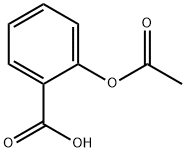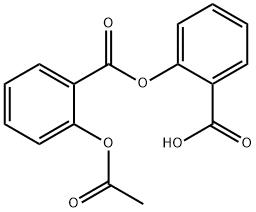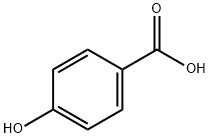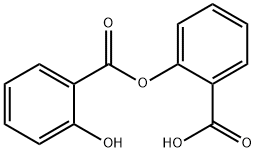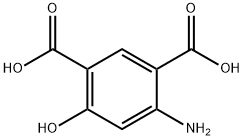A0727712
Acetylsalicylic acid , For plant cell culture, ≥99.0% , 50-78-2
Synonym(s):
O-Acetylsalicylic acid;2-Acetoxybenzoic acid;Acetylsalicylic acid;ASA;Aspirin
CAS NO.:50-78-2
Empirical Formula: C9H8O4
Molecular Weight: 180.16
MDL number: MFCD00002430
EINECS: 200-064-1
| Pack Size | Price | Stock | Quantity |
| 250G | RMB270.40 | In Stock |
|
| others | Enquire |
Update time: 2022-07-08
PRODUCT Properties
| Melting point: | 134-136 °C (lit.) |
| Boiling point: | 272.96°C (rough estimate) |
| Density | 1.35 |
| refractive index | 1.4500 (estimate) |
| Flash point: | 250 °C |
| storage temp. | 2-8°C |
| solubility | H2O: 10 mg/mL at 37 °C |
| form | crystalline |
| color | white |
| pka | 3.5(at 25℃) |
| biological source | synthetic |
| Water Solubility | 3.3 g/L (20 ºC) |
| ε(extinction coefficient) | 190 at 298nm in aqueous base at 1mM 409 at 231nm in aqueous base at 1mM 466 at 230nm in aqueous acid at 1mM 68 at 278nm in aqueous acid at 1mM |
| Merck | 14,851 |
| BRN | 779271 |
| Exposure limits | ACGIH: TWA 5 mg/m3 NIOSH: TWA 5 mg/m3 |
| BCS Class | 3 |
| Stability: | Stable. Keep dry. Incompatible with strong oxidizing agents, strong bases, strong acids, various other compounds such as iodides, iron salts, quinine salts, etc. |
| InChIKey | BSYNRYMUTXBXSQ-UHFFFAOYSA-N |
| LogP | 1.190 |
| CAS DataBase Reference | 50-78-2(CAS DataBase Reference) |
| NIST Chemistry Reference | Benzoic acid, 2-(acetyloxy)-(50-78-2) |
| EPA Substance Registry System | Aspirin (50-78-2) |
Description and Uses
Acetylsalicylic acid is a white crystalline powder commonly known by its common name as aspirin or ASA. Aspirin is the most widely used medication in the world.
Acetylsalicylic acid's original use as an analgesic, an antipyretic, and to reduce inflammation continues to this day. More recently there is some evidence that aspirin lessens the chance of heart attacks as a result of its effect as a blood "thinner."
Safety
| Symbol(GHS) |  GHS07 |
| Signal word | Warning |
| Hazard statements | H302 |
| Precautionary statements | P264-P270-P301+P312-P501 |
| Hazard Codes | Xn |
| Risk Statements | 22-36/37/38 |
| Safety Statements | 26-36/37/39 |
| OEB | B |
| OEL | TWA: 5 mg/m3 |
| RIDADR | UN 1851 |
| WGK Germany | 1 |
| RTECS | VO0700000 |
| TSCA | Yes |
| HazardClass | 6.1 |
| PackingGroup | III |
| HS Code | 29182210 |
| Hazardous Substances Data | 50-78-2(Hazardous Substances Data) |
| Toxicity | LD50 orally in mice, rats: 1.1, 1.5 g/kg (Hart) |

